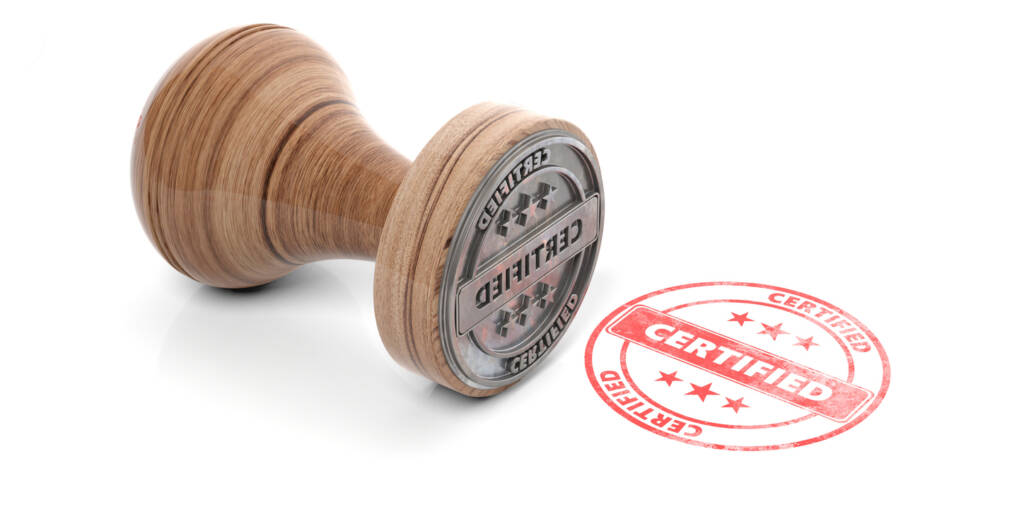Are You Relying on Manual Means to Detect Insider Trading? Here’s How StarCompliance Can Help
Digging through the data to detect insider activity doesn’t have to be as hard or inefficient as it’s become. The right compliance software can help your organization surface the very risky business of insider trading, faster and more reliably than ever before.
Insider trading is more prevalent today than many might like to believe. Researchers estimate that insiders represent almost 10% of total daily trading volume (and at least four times more than regulators detect). The Financial Industry Regulatory Authority’s (FINRA) 2021 decision to bar former Goldman Sachs research analyst Brian Maguire from the broker-dealer industry for insider trading is just one high-profile example. In StarCompliance’s (Star) work helping firms establish programs to prevent this illegal activity, we see all levels of preparedness, but even the most mature systems still tend to have room for improvement.
What Is Insider Trading?
Insider trading refers to the buying or selling of a publicly traded company’s securities by someone who has access to material nonpublic information (MNPI) about the company. This information, if made public, could significantly impact the company’s stock price.
While some insider trading can be legal (when company insiders trade in accordance with company policies and disclose their trades), illegal insider trading occurs when individuals use MNPI to gain an unfair advantage in the market, violating securities laws and regulations. Regulatory bodies like the U.S. Securities and Exchange Commission (SEC) and the Financial Conduct Authority (FCA) in the UK actively monitor and enforce actions against such activities to maintain fair and transparent financial markets.
Why Is Insider Trading Illegal?
Simply put, insider trading is illegal because it undermines the integrity of financial markets. It occurs when individuals trade based on confidential, market-moving information that has not been disclosed publicly. This might include knowledge of upcoming earnings reports, mergers, product launches, regulatory approvals, or other significant events. When individuals with access to MNPI use that knowledge to trade securities, they can profit—or avoid losses—based on information unavailable to the general public. This erodes trust in the fairness and transparency of the markets, discouraging investor participation and damaging public confidence.
However, not all insider trading is illegal. Company executives and employees can legally buy and sell their own company’s stock, but only if they follow specific rules. These legal transactions are typically pre-approved by the company, disclosed publicly, and conducted without the use of MNPI.
The primary law governing insider trading in the United States is the Securities Exchange Act of 1934, which empowers the SEC to enforce rules against securities fraud, including insider trading. SEC Rule 10b-5, one of the most cited anti-fraud provisions, explicitly prohibits trading on the basis of deceptive practices, including the misuse of MNPI.
In addition to the SEC, self-regulatory organizations like FINRA also play a critical role in detecting and penalizing insider trading violations.
The consequences of illegal insider trading are severe. Individuals found guilty can face:
- Civil penalties up to three times the profit gained or loss avoided
- Criminal fines of up to $5 million for individuals and $25 million for corporations
- Imprisonment for up to 20 years per violation
- Permanent industry bans and career-ending reputational damage
For firms, the fallout includes regulatory sanctions, hefty fines, legal fees, and the potential for irreparable harm to brand reputation and investor trust.
Examples of Insider Trading Cases
Over the years, insider trading has made headlines with high-profile cases that highlight both the seriousness of the offense and regulators’ determination to enforce the law. Here are two notable examples:
Martha Stewart (ImClone Systems Case)
In 2001, businesswoman and media personality Martha Stewart—a name that has become synonymous with insider trading—sold nearly 4,000 shares of biopharmaceutical company ImClone Systems after allegedly receiving a tip that the company’s CEO was selling his stock. The tip was said to be based on nonpublic information that the FDA was going to reject ImClone’s application for a new cancer drug. Stewart avoided a loss of approximately $45,000.
While Stewart was not charged with insider trading itself, she was convicted of obstruction of justice and making false statements to investigators. She served five months in prison, followed by house arrest and probation. The case remains one of the most publicized examples of how even prominent figures are not immune to regulatory scrutiny.
Raj Rajaratnam and the Galleon Group
One of the largest insider trading cases in U.S. history involved Raj Rajaratnam, founder of the Galleon Group hedge fund. Between 2003 and 2009, Rajaratnam orchestrated a massive insider trading scheme, using tips from corporate insiders to trade stocks such as Google, Intel, and Goldman Sachs. The illicit profits exceeded $60 million.
In 2011, Rajaratnam was convicted of 14 counts of securities fraud and conspiracy. He was sentenced to 11 years in prison; he was fined $10 million and ordered to forfeit $53.8 million, with an additional $92.8 million penalty imposed by the SEC. The case underscored the SEC’s and DOJ’s growing use of wiretaps and aggressive enforcement tactics, similar to those used in organized crime investigations.
These and other insider trading cases demonstrate that:
- No individual, regardless of status or influence, is above the law.
- Regulatory bodies like the SEC, DOJ, and FINRA are willing to pursue complex investigations to protect market integrity.
- The consequences of insider trading are career-ending and personally devastating.
- Firms connected to these violations often suffer severe reputational damage and financial penalties.
For compliance officers, these cases serve as a stark reminder of the importance of proactive monitoring, rigorous internal controls, and robust detection systems—all of which StarCompliance delivers through its STAR Platform.
How Insider Trading Is Detected
Traditionally, many firms have relied on manual or semi-manual processes to detect insider trading. Compliance officers manually review employee trading data, compare it with public news events, and look for anomalies. However, this approach has serious limitations:
- Scale and scope challenges: With hundreds or thousands of employees trading across multiple asset classes, firms quickly accumulate an overwhelming volume of transactions to monitor.
- Resource constraints: Teams can realistically investigate only a fraction of total trades—often just one out of every 20 transactions. Even this limited review demands significant time and effort, resulting in haste and questionable accuracy.
- Inability to adapt: Many in-house solutions lack the flexibility to keep up with rapid market changes, evolving asset types, and new regulatory expectations.
As a result, critical risks can easily slip through the cracks, exposing firms to significant financial, legal, and reputational damage.
Whether using manual or automated methods, regulators and compliance teams focus on identifying key red flags, including:
- Unusual trading patterns, such as abnormal spikes in trading volume or frequency by an employee
- Suspicious trades before earnings reports or major corporate events
- Trading activity inconsistent with past behavior, such as a sudden interest in unfamiliar sectors or companies
- Clusters of employees trading similarly, indicative of a potential network sharing MNPI
Firms that rely solely on manual detection methods face a frighteningly high risk potential. Modern compliance demands automated solutions capable of handling scale, speed, and complexity. This is where StarCompliance and the STAR Platform excel.
The STAR Platform provides:
- Automated pre-clearance procedures to prevent unauthorized trades before they happen
- Advanced analytics to detect trades made ahead of price movements or significant news events
- Correlative analysis across employees and departments to spot potential collusion or networked insider activity
- Real-time alerts and dashboards which enable compliance teams to prioritize and investigate high-risk trades efficiently
- Comprehensive audit trails that ensure all investigations are thoroughly documented for regulators
Without robust automation, firms risk falling behind both in regulatory compliance and in maintaining market integrity. The STAR Platform ensures organizations stay ahead of insider trading risks with scalable, efficient, and intelligent detection capabilities.
Setting Up the Star Solution
The right compliance software can help your organization get a handle on many of the processes that can identify and more quickly surface insider activity. When you partner with StarCompliance and the STAR Platform, you’re tapping into insider trading detection software that can help you via the following powerful capabilities:
1. Implement a procedure to pre-clear trades
One of the most fundamental functions of the STAR Platform is a step that asks employees to pre-clear their trading activity. This simple procedure can be fully automated and helps prevent insider trading activity before it occurs. This immediately alleviates a major part of the compliance team’s burden.
2. Analyze trades relative to price movements
The STAR Platform also looks for trades that happen ahead of price movements or other patterns that could indicate a trader had access to material non-public information, or MNPI. For example, if there’s a sharp increase in price, STAR can look for trades several days before that might raise a red flag. Because compliance officers can access the employee’s brokerage accounts and other trading activity and positions, they can quickly spot a flagged trade that looks out of the ordinary in terms of size, sector, or the employee’s overall investing pattern.
3. Measure the type of news and relative density
While many surveillance tools look at news and density, the STAR Platform measures both the type of news and the relative density, with access to 400,000+ news stories from 8,500+ sources every day that could impact price—from the granting of patents, to changes in ownership, to supply chain issues. An unusually weighty news day for a company might signal that a trade isn’t significant enough to investigate, but the STAR algorithm cross-references that information with trades and price changes to form a more accurate picture of the activity.
4. Correlate individual activity throughout the firm
Because insider trading rarely happens in a vacuum, the STAR Platform correlates all employee trading throughout the firm to spot individuals working in a closed network. STAR also looks for clusters of employees trading together, which might mean they’re operating off the same MNPI. Without extensive correlation techniques, like STAR’s, a platform can generate an abundance of false positives. And because regulators expect you to investigate all of them, a bad surveillance system can actually increase your workload and risk.
5. Document the investigative process
Regulators are just as interested in seeing the near-misses or suspicions that end up being false, because these investigations demonstrate that the firm is making a real effort to monitor its employees and spot wrongdoing. Because amassing thorough documentation can be a time-intensive process when it’s performed manually, STAR automates the audit trail to improve speed, accuracy, and efficiency.
In markets that move at the speed of light, relying on manual methods to detect insider trading is no longer a viable option. Firms must embrace automated compliance solutions that can scale with their business and adapt to evolving regulations, all while providing the actionable intelligence needed to protect their reputation and mitigate risk.
With the STAR Platform, StarCompliance empowers compliance teams to proactively detect, prevent, and document insider trading activity with confidence and efficiency. Investing in the right technology is not just a smart decision to increase efficiency—it’s a critical step in safeguarding your firm’s continued integrity.
Ready to see how StarCompliance can help your firm detect and prevent insider trading? Book a personalized demo today.

Webinar
Product Spotlight: Insider Trading
Keep your compliance team in the know and reduce the chances of market abuse, with our easy-to-use insider trading solution. Track which employees have material and non-public information using insider lists and compare employee trades against high-impact global events and market activity.
Frequently Asked Questions
What is insider trading?
Insider trading is the buying or selling of a company’s securities by someone who has access to material nonpublic information (MNPI) that could influence the stock’s price. Trading based on this confidential information gives an unfair advantage and violates market fairness.
Why is insider trading illegal?
Insider trading is illegal because it allows individuals to profit from confidential information not available to the public, undermining market integrity and investor trust. Laws like the Securities Exchange Act of 1934 prohibit such activities, with penalties including fines, imprisonment, and reputational damage.
How can I detect insider trading in my firm?
Firms can detect insider trading by monitoring for red flags such as unusual trading patterns, trades before major news releases, and coordinated activity among employees. Automated compliance platforms such as StarCompliance analyze trades, correlate employee activity, and flag suspicious transactions for investigation, all while maintaining auditable records.
How do I protect my firm and employees from insider trading?
Protect your firm from insider trading by implementing pre-trade clearance procedures, automating trade surveillance, maintaining a robust audit trail, and educating employees on the risks of illegal trading (and how to avoid it). Compliance software like StarCompliance’s STAR Platform helps prevent insider trading, ensures regulatory compliance, and fosters a culture of transparency at every level of a firm.

Best Practices Guide: Detecting Insider Trading





